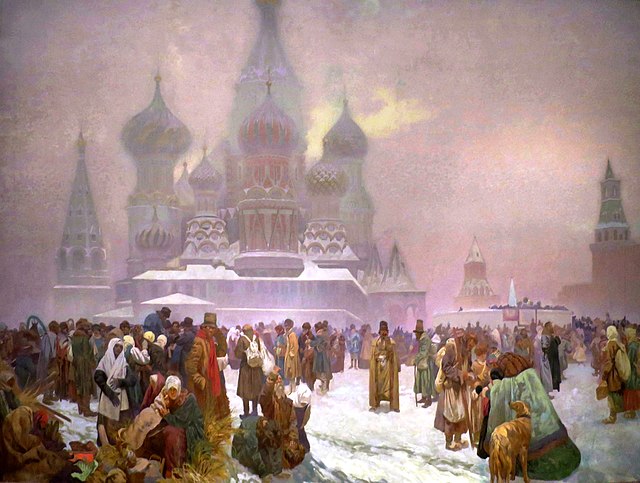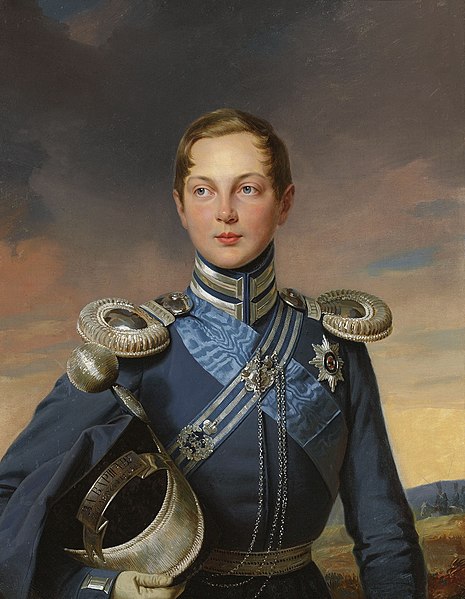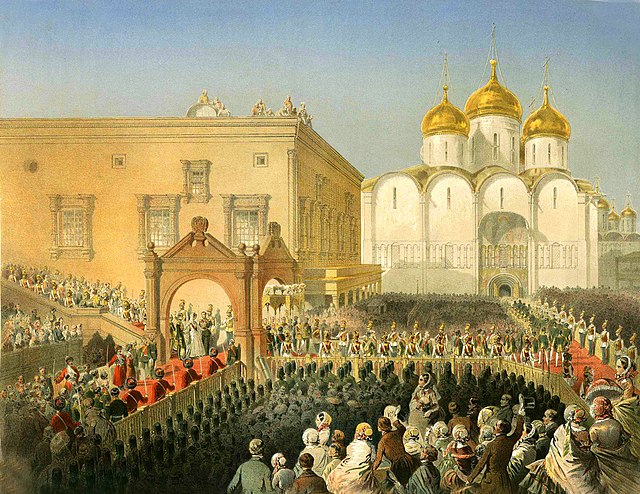Emancipation reform of 1861
The emancipation reform of 1861 in Russia, also known as the Edict of Emancipation of Russia, was the first and most important of the liberal reforms enacted during the reign of Emperor Alexander II of Russia. The reform effectively abolished serfdom throughout the Russian Empire.
A 1907 painting by Boris Kustodiev depicting Russian serfs listening to the proclamation of the Emancipation Manifesto in 1861
Peasants Reading the Emancipation Manifesto, an 1873 painting by Grigory Myasoyedov
The Abolition of Serfdom in Russia: Work in Freedom is the Foundation of a State (1914), by Alphonse Mucha, The Slav Epic
Alexander II was Emperor of Russia, King of Congress Poland and Grand Duke of Finland from 2 March 1855 until his assassination in 1881. Alexander's most significant reform as emperor was the emancipation of Russia's serfs in 1861, for which he is known as Alexander the Liberator.
Photograph, 1878–81
Grand prince Alexander Nikolaevich, 1830
Procession of Alexander II into Dormition Cathedral from the Red Porch during his coronation
The coronation of Emperor Alexander II and Empress Maria Alexandrovna on 26 August/7 September 1856 at the Dormition Cathedral of the Moscow Kremlin, painting by Mihály Zichy. The painting depicts the moment when the Emperor crowned the Empress.







